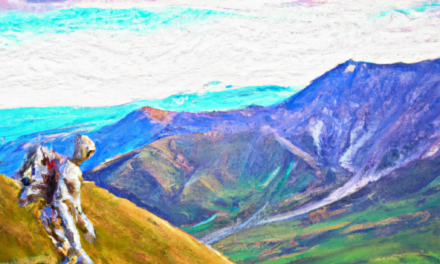It’s been six weeks since my operation, since I last wrote about recovery things have been moving along nicely. I have got back into hiking, done an overnight backpack, and been skiing. I’ve had my final doctor’s appointment and to a great extent, all is looking good. The would have pretty much completely recovered – I’m not expecting much change from now on how it looks. Overall there is still a feeling of stiffness but more on that later. From here on I think it’s just down to more exercise and stretching – this will be my last regular update on my recovery journey from my Hallux Limitus Cheilectomy surgery,
Getting back to exercise
In week 5, I started to get back to more regular walking. I’m still using my Altra Lone Peak’s – I started to use these without the carbon fiber insoles – just to start to allow my toe to get fore flex during walking. I kept walking to local hikes and no more than about five miles. It was good to get out and walk with Hunter. Overall the download flex feels better than the upward flex.
As a note I plan on taking my carbon fiber insole hiking with me – they feel like a good safeguard just in case there is any pain in the joint.
At the end of week five, I was persuaded by Keenan to go skiing at the weekend. Even though getting my foot into my regular shoe was not a problem, there was a little tenderness at the maximum flex. Getting into ski boots was completely different. The amount of flex necessary to bend my foot into a ski boot was considerably more. My ski boots were a little too small and snug to do this. Luckily my elder son has boots that are a 1/2 size bigger – and he wouldn’t be needing them – so with a bit of practice, I found I could bend my foot into them. The plus side of this – was I got to try out his skis!
Skiing was actually great! Once my foot was in the boot it’s well protected and I had a great day spring skiing. The skis worked great – probably one of the best days of the season. Getting my foot out of the ski boot was equally difficult and painful – but overall a good day.
General mobility is now pretty good – now problem walking on any type of surface. Just a continuous need to work on flexing to ensure increased mobility.
Backpacking
The following weekend I went backpacking – just a short hike of 7 miles round trip – but this was the first time I’d been out with a backpack on. Again this worked really well. The only pain was from the occasional kicking of a tree root! I’m pretty pleased with this progress and should start progressing onto longer hikes and get back into a more rigorous training for my JMT hike.
6 Week Post-op Visit
I had my 6-week post-op visit – this was extremely short – the visit itself was probably no more than 10 minutes. Overall the doctor confirmed that things were on track. There was an option to have PT if I wanted to work more on the ROM. I may take this option as ROM was really the main reason I had this surgery.




What’s still odd
Overall I’m pretty happy with the progress – but that’s not to say everything is feeling fine with my hallux limitus recovery. In particular, there are still some odd nerve sensations. One that I particularly notice is if I put pressure on the top of my foot, just by crossing my feet, or cross my legs, it seems to induce pain in my toe. As soon as I reduce the pressure that goes away.
Overall my toe still feels stiff. If I stress the ROM, particularly upward there is pain. The ROM is improving and I expect it will be a slow process from here. I have no problem moving in normal motions, in fact, I can start to put some pressure on it for example with a press-up.
Here’s the link to part 4.
Here’s the link to part 6.






IMO, the bone spur that was removed is a direct consequence of the damage in the major joint. The spur causes it’s own set of problems. But,the joint damage is still there. Long term I’m not sure I understand if it does much more than buy time. I’m not knocking that, At my age if I could buy 10 more years, it would be a boon. I’m watching your progress through this ‘experiment’ with considerable interest.
It would be excellent if a reliable, functional, long-term artificial joint could be developed. Results seem to be highly variable.
I think when hiking you probably want to keep the carbon plate in. Walking long distance, especially over uneven ground with extra weight is a continual stress on (all) joints. I don’t see that as being ‘on the trail PT to increase ROM’. I think it might be better to protect the joint during this stress. Do the PT/ROM exercises in camp after you get your boots off.
Maybe run that by your physician.
My carbon plate is making a significant difference. I do not like the pressure micro-spikes make on the bone spur, even with a padded mole foam doughnut.
Oh I think this is definitely about buying time – while I was researching this there seems to be one school of thought that is wait for surgery until you can’t bear the pain anymore – I went in the other direction and decided to get this done early so I can enjoy hiking for another 10 years – I fully expect to be back for a fusion at some point – if you look at the surgery picture you can see that a good deal of the cartilage is gone on the joint.
I do think you bring up a good point – if the damage was caused by injury (which I think it was – I’m going to put it down to some ski boots that I probably shouldn’t have had) then protecting the joint might elongate that time every more. So I’m playing with a setup of keeping my Altra’s with the plate but change the insoles to super feet to give a little more cushion for the rest of the foot on the plate – I need to hike around a little more in that to see if I like it.
I’ve found the only shoe my plate will work in is my Vasque hiking boots-very fortunate that.
They don’t work in my Hoka Bondi, they didn’t work in my previous Merrell hikers (unfortunate, I really thought those were great boots), or ANYTHING else.
Taken me awhile but I’m thinking it’s a couple causes, the main one being a flat plate in a shaped shoe. Almost no shoes are completely flat, side to side, or front to back. Plus there is the width factor, plate width in various areas vs the shoe width in those areas. Those discrepancies are not uniform in the shoes. They vary from one to the other.
In most of my shoes the plate bridges the differences and pushes my foot up in a fashion that is not compatible with the foot/plate/shoe walking function. It also loads up under walking pressure, then (un)flexes and unloads as pressure comes off. That causes it’s own set of dynamics. I’m just getting to understand that.
Next I’m ordering up a full Morton’s extension arch support, so hopefully I don’t have to deal with the vagaries of a flat plate and a cushioning insert. I may also try a carbon plate Morton’s extension to see if I can get around the big flat plate issues.
My already large box of inserts is growing.
The experiment continues. I got a pair of these:https://www.myfootshop.com/hallux-trainer-insoles
I’ve been using them for walks in my Hoka Bondi. They seemed OK. The metatarsal arch is pretty aggressive, at least for me. I’m OK with the main arch. I couldn’t really tell if they were really better than a stock arch for simple walks.
Finally did a hike with that combo. I see the Bondi as a walking shoe, not a hiking shoe, so needed an easy trail. Did 7.5 miles, 2300′ on a well graded minimally rocky hike. Toe ended up feeling fine during and after the hike. Noticed the metatarsal arch in both feet the whole hike but didn’t seem to suffer from that.
As expected, they ‘walk’ fine, are poor on snow (I deliberately tried a couple lingering patches), stick OK to good granite, but are entirely too mushy for decent edging.
My buddy got some Hoka Sky Kaha. He’s got really bad bunions and suffers from hiking. 2 hikes and so far he’s really happy. Met another older guy on the above hike with the Kaha, and his feelings about them were similar to my thoughts about the Bondi.
So I completed the JMT – I ended up using my LP 4.5 with superfeet insoles and a carbon fiber insole in the left foot. The terrain is of course a complete mix from soft underfoot sandy trail to maintained trail made of course aggregate to scrambling over talus. Overall I was very happy with how my toe performed. We averaged around 14 miles a day. There was no specific pain due to HL and only occasionally did I get my foot in a position where I could specifically relate pain to the condition (I got is stuck between a two rocks and twisted it once which put pressure on the top of the toe bone and that was about the most painful). Of course my feet were pretty tired from the general hiking. The ROM of the toe is still not as much as I would like – but it certainly doesn’t have an impact on hiking.
Thanks very much for this write up, I have had pain in both big toe joints for years. I’m scheduled for my first cheilectomy tomorrow morning. Wish I hadn’t peeked at the photos though 😀.